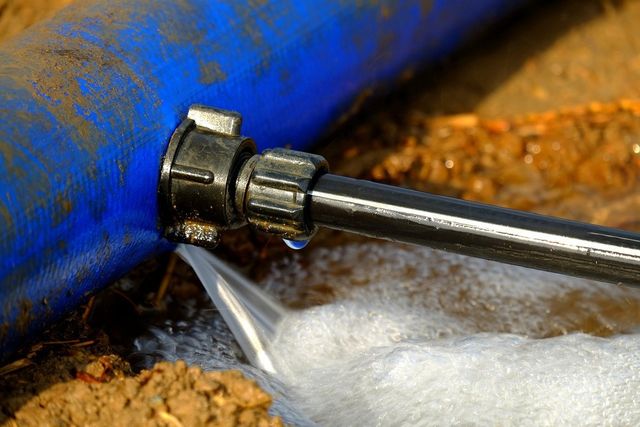What are your thoughts about Finding hidden leaks?

Early discovery of leaking water lines can alleviate a potential catastrophe. Some tiny water leaks might not be visible.
1. Analyze the Water Meter
Every residence has a water meter. Inspecting it is a guaranteed manner in which aids you discover leakages. For beginners, switch off all the water resources. Ensure nobody will certainly purge, use the faucet, shower, run the cleaning machine or dishwasher. From there, go to the meter as well as watch if it will certainly transform. Since no one is using it, there must be no activities. If it relocates, that shows a fast-moving leakage. Furthermore, if you detect no changes, wait an hour or more as well as inspect back once again. This indicates you might have a sluggish leak that can also be underground.
2. Check Water Intake
If you spot abrupt modifications, despite your usage being the same, it suggests that you have leaks in your plumbing system. A sudden spike in your costs indicates a fast-moving leakage.
A stable rise every month, even with the very same practices, reveals you have a sluggish leakage that's also gradually escalating. Call a plumber to completely check your building, particularly if you really feel a warm location on your flooring with piping underneath.
3. Do a Food Coloring Test
When it comes to water intake, 30% comes from toilets. If the color in some way infiltrates your dish during that time without flushing, there's a leak in between the tank as well as dish.
4. Asses Outside Lines
Don't neglect to check your outside water lines as well. Test faucets by affixing a yard hose. Ought to water leak out of the link, you have a loosened rubber gasket. Change this and make certain all links are tight. If you've got a lawn sprinkler, it will certainly aid get it properly examined and kept annually. One small leak can squander tons of water as well as surge your water expense.
5. Evaluate the situation as well as evaluate
Homeowners should make it a habit to check under the sink counters and even inside cabinets for any bad odor or mold development. These two red flags indicate a leak so prompt attention is called for. Doing regular inspections, even bi-annually, can save you from a major issue.
Check for stainings and weakening as a lot of pipes and also home appliances have a life expectations. If you think dripping water lines in your plumbing system, don't wait for it to escalate.
Early discovery of leaking water lines can mitigate a possible calamity. Some little water leakages may not be visible. Inspecting it is a surefire method that aids you discover leakages. One little leak can throw away loads of water as well as increase your water costs.
If you think dripping water lines in your plumbing system, do not wait for it to escalate.
How to Know If Your Home Has a Hidden Leak
Water Meter Reveals Inexplicable Water Usage
If you’d like to test whether or not there’s a leak somewhere in your home, you can do this using your water meter. Here is how to conduct the test:
Don’t use any water in your home for at least 30 minutes; this also means not turning on faucets or water-using appliances.
Go outside, and check your water meter for activity.
If your water meter shows that there was activity, even though no one was using any water, this proves that there is a leak in your home.Visible Mold or Mildew Growth
Leaks behind walls create moist, dark environments that allow mold and mildew to grow and thrive. Eventually, you might see mold growth forming on the wall closest to a hidden leak.
If mold is growing in an area that receives a high amount of moisture, such as a bathroom, it may simply be an indication that better ventilation is needed. However, if you see mold growth on a wall or the ceiling in an area where you would not expect, you probably have a hidden leak.
Musty, Mildew Odor
Sometimes you might not be able to see the mold or mildew that is growing as a result of a leak. However, the smell can give the problem away just as easily. If you catch a whiff of something musty, there’s a good chance that old water is collecting somewhere in your home that you can’t see.
Stained/Warped Walls, Ceilings, or Floors
When your home soaks up water, a variety of red flags can become visible, including ceiling stains, bubbling drywall, warped walls, and sagging floors. While these issues can be caused by excess humidity, they can also be signs that a pipe or plumbing connection has started leaking behind your walls.
Inexplicably High Water Bill
After a while, you get a general sense for what your water bill should be. If you own a pool or sprinkler system, your bill will tend to be higher during summer. However, if you receive a water bill that seems especially high, and you can’t figure out what caused it, then you may have a hidden leak somewhere that’s increasing your bill.
https://www.plumbingjoint.com/blog/2019/july/how-to-know-if-your-home-has-a-hidden-leak/

Hopefully you enjoyed reading our part about Detecting hidden plumbing leaks. Many thanks for taking the time to read through our posting. Sharing is nice. Helping people is fun. Thanks for your time invested reading it.
Preventative solutions offered.